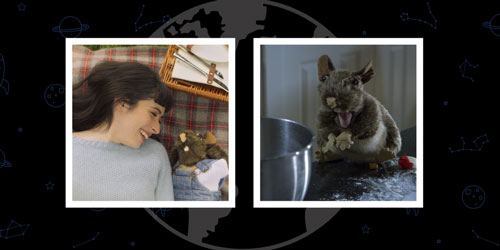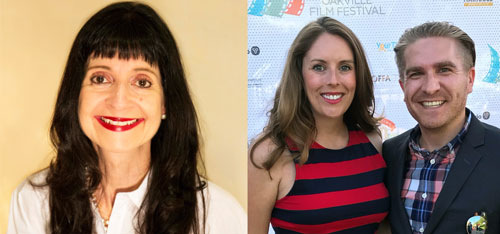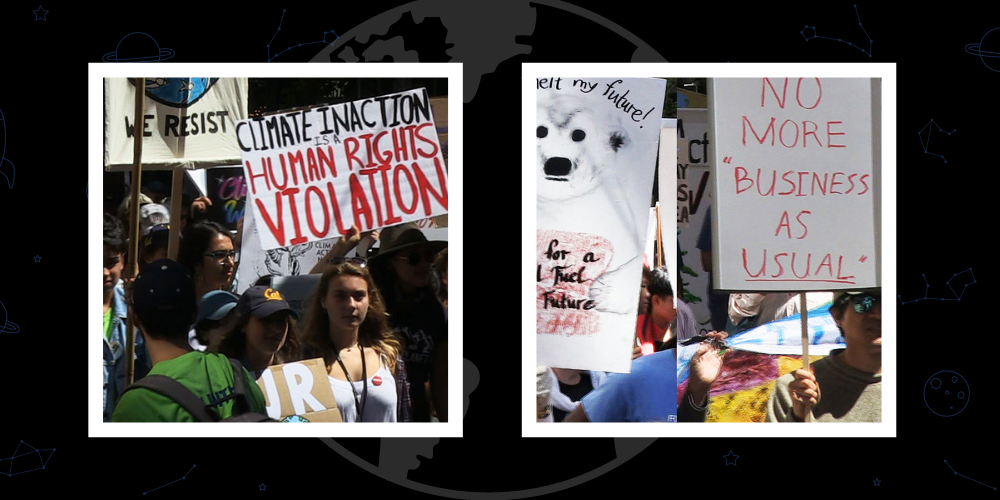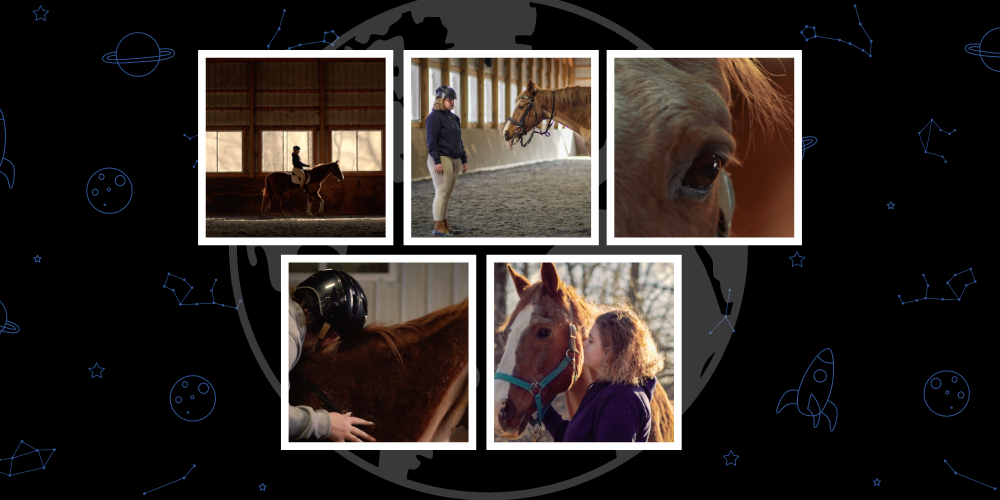This month audiences can screen Fairy Tail (curated for Planet Classroom by KIDS FIRST), a unique and comical short film directed, written and produced by Justin and Kristin Schaack. The film stars Leslie Vincent and Andy Rocco Kraft. In this story, a hopeless romantic falls for a rather surprising, and furry, companion. Viewers are taken through this young women’s daydream of her future with her new love, only to be met with a whole new surprise. Putting a fun twist on the common trope of love at first sight, Fairy Tail is an amusing tale that is entertaining to watch at any age.
The Global Search for Education welcomes Justin and Kristin Schaack.
Justin and Kristin: How did you both come up with this comical play on the trope of love at first sight?
We like to joke that Fairy Tail is autobiographical, and it’s the story of how we met and fell in love. In fact, the idea was inspired by a few things. Ever since we were kids, we’ve been obsessed with films and television that incorporate puppets. There’s something about that medium that aligns with our sense of humor and wacky take on common story structures. We wrote the script knowing we would use puppets and use classic romantic comedy tropes that are widely familiar. Then we combined that with specific aspects of filmmaking that we love, like the use of off-screen space, the ability to change speed, and well-timed punch lines in the edit. We also wanted the film to be for everyone. With only six lines of dialogue and 14 total words, the Fairy Tail screenplay is written mostly with action and situations. Many of our
previous films are dialogue heavy, so it was a real effort to keep ourselves from writing more thorough dialogue. In the end, we’re happy that we stuck to our self-imposed mandate to write a minimal dialogue script. It’s a classic case of less is more. We also discovered that the minimal dialogue makes the film more accessible to children and international audiences.
Can you share a favorite “AHA” moment or experience from the filmmaking process?
After writing the film, we had to figure out how to capture all the locations in one shoot day. The logistics of shooting in so many locations with a tight schedule made for some efficient, some might say scrappy, filmmaking. Our creative solution was to keep it simple. For example, the outdoor scenes were all shot in different parts of one park. The birthing scene was shot in our garage. The actor is simply sitting on an office chair covered with bed sheets, and we hung a shower curtain in the background. Like that, we had a birthing center ten feet from where we shot the kitchen scenes. On top of that, our crew was composed of pros that kept us on schedule without sacrificing the quality of film. So the biggest AHA moment was being prepared before we shot, so we could be as efficient as possible.
How did you both get into the space of children’s filmmaking?
To be honest, it’s not our goal to create children’s films from the outset. We write films that we want to see and go from there. As it turns out, many of those stories are family-friendly and geared towards children. We fell in love with movies and TV when we were kids, so what we watched then undoubtedly influences the films we make today. I guess you could say we’re kids at heart!
The final scene in your movie (with all the mice moving around) is hilarious – how difficult was it to pull that off?
The last scene of the film took the most planning to execute. Our puppeteer created only four of the baby mice puppets, but the scene requires…spoiler alert…59 to be onscreen. So, we filmed four at a time in different sections of the final picture. We slowly worked our way through the kitchen from left to right until we had enough mice to fill the screen. We took all that footage into post-production and combined all the shots to make the final picture. In the end, there were over 75 layers of video to create that final shot. Between shooting it and editing it, that sequence took over 50 hours for less than 5 seconds of screen time!
Audience reaction and main takeaways. Please share what you believe are the main takeaways from your film based on the audience feedback.
We’re thrilled by the positive response the film has received by audiences of all ages and backgrounds. Fairy Tail is a lighthearted film that’s meant to make the audience smile. As comedy storytellers, we have the unique ability to bring joy and, if necessary, a respite to someone’s day. It’s almost spiritual; to make someone laugh is a way to connect to someone’s soul. Whether it’s a full-throated howl, giggle, snicker, chuckle, chortle, snort, or guffaw, when an audience audibly responds to Fairy Tail, they’re having an involuntary physical response that cannot be contained. To think that a joke or situation that we created can connect with an audience like that is akin to a superhero strength.
Thank you Justin and Kristin!
C M Rubin with Kristin and Justin Schaack
Don’t Miss Fairy Tail (Curated by KIDS FIRST), directed by Justin and Kristin Schaack, now screening on the Planet Classroom Network YouTube Channel.







Recent Comments